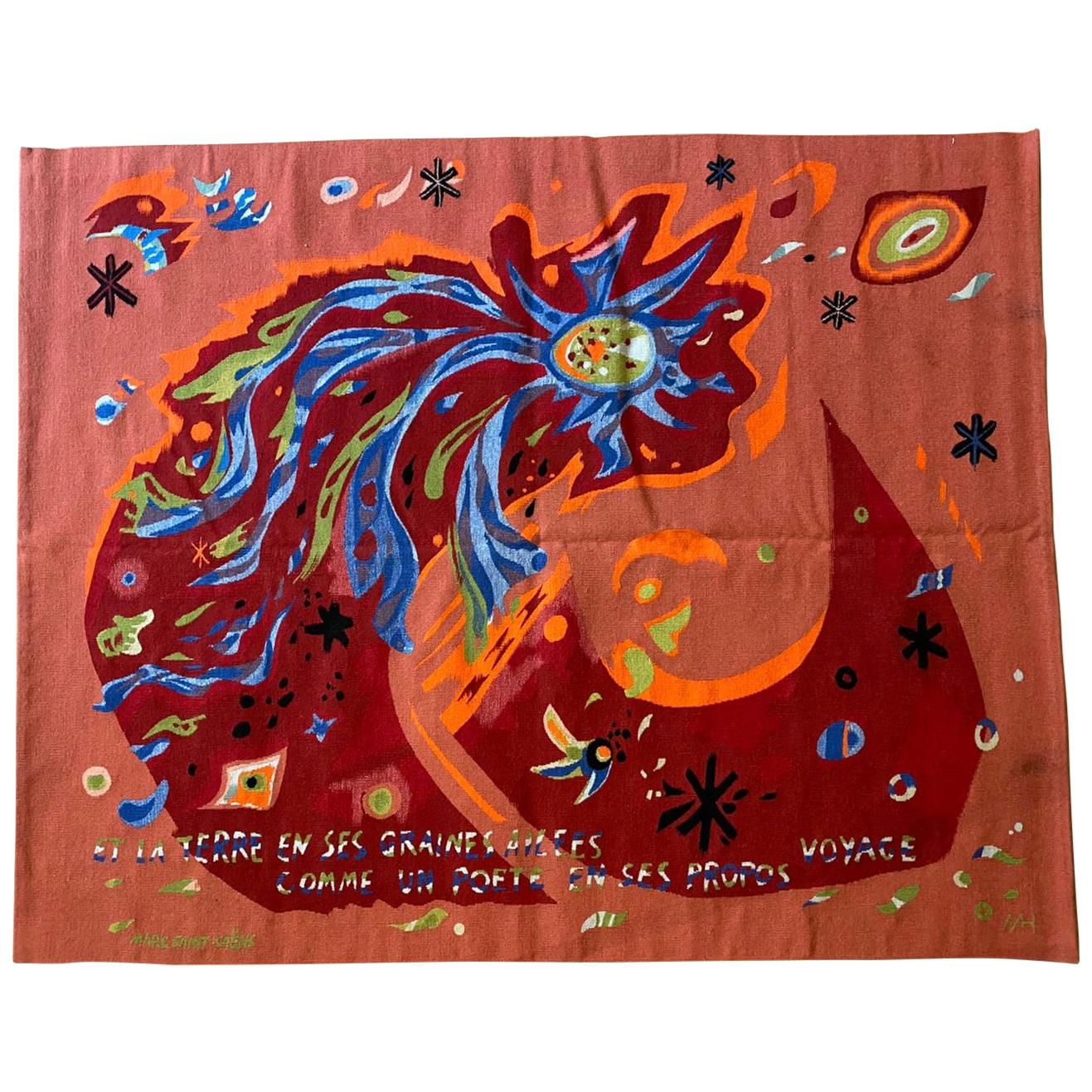Marc Saint-Saëns
(France, 1903-1979)
Boccara Gallery is pleased to count among its wide range of artists Marc Saint-Saëns, one of the most influential artists associated with the revival of French tapestry in the 1940s. His emblematic work “Les Vierges Folles” (The Foolish Virgins) marks Saint-Saëns’ true beginnings in the art of tapestry, after an attempt in the mid-1930s.
Originally Saint-Saëns was a painter of murals, until 1940, when Jean Lurcat approached him to propose collaboration. And during the war (WWII), the latter produced the first of his allegorical masterpieces – tapestries reflecting indignation, combat, resistance: “Les Vierges Folles” (The Foolish Virgins), “Thésée et le Minotaure” (Theseus and the Minotaur). At the end of the war, as part of natural course of events, he teamed up with Lurçat, whose artistic convictions he shared (a simplified palette, outlined cartoons with colors indicated by pre-ordained numbers, and the specific nature of tapestry design) at the A.P.C.T. (Association des Peintres-Cartonniers de Tapisserie). His universe, where the human figure, stretched, elongated, occupies an important place (particularly when compared to his companions Lurçat or Picart le Doux), pivots around traditional themes: the woman, the Commedia dell’arte, Greek mythology etc., refined by the brilliance of the colors and the simplification of the layout. His work would evolve later, in the 1960’s, towards cartoons of a more lyrical design, almost abstract where elemental and cosmic forces would dominate.
After a brief “flirtation” with the tapestry in the 1930s, Saint-Saëns, encouraged by Lurçat, tried his hand again at it during the World War II. “Les Vierges Folles”, was from first attempt a huge success. Using the gospel parable as a vehicle, Saint-Saëns illustrates in the dark night of the Occupation, the Virgins awaiting the Liberation. The very first version contains some slight differences: a third virgin, an owl, the moon and a different format, closer to a square. This version, was incredibly successful (abundantly reproduced and illustrated) thus making Saint- Saëns, with the help of other popular designs (“Orion”, “Le Verseau”, “Thésée et le Minotaure” and others), one of the most influential artists associated with the renewal of French tapestry in the 1940’s.
One copy of this tapestry was demonstrated at the exhibition «La tapisserie française du Moyen-Age à nos jours” (“The French Tapestry from the Middle Ages to nowadays”) held at the Musée d’Art Moderne, Paris in 1946; another is owned by the Victoria and Albert Museum in London.




